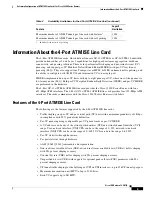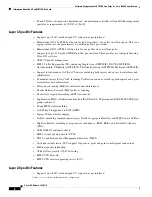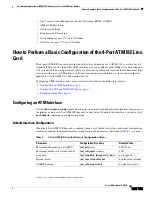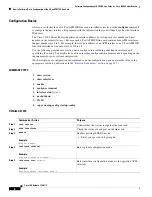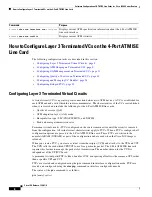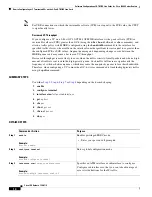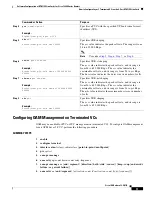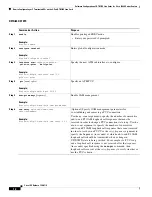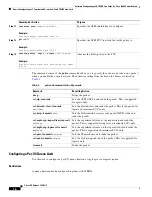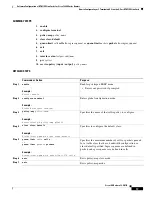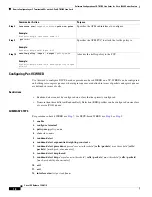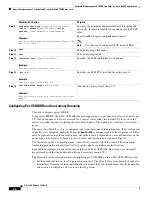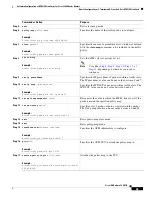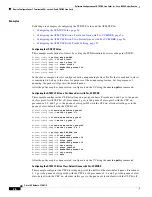
Software Configuration of ATM ISE Line Cards for Cisco 12000 Series Routers
How to Configure Layer 3 Terminated VCs on the 4-Port ATM ISE Line Card
14
Cisco IOS Release 12.0(27)S
The 4-Port ATM ISE line card implements two types of OAM cells: CC cells for fault management and
CC cells for activation and deactivation. Fault management cells detect connectivity failures. Activation
and deactivation cells initiate the activation or deactivation of continuity checking.
Configuring Quality of Service on Terminated VCs
Quality of Service (QoS) on terminated VCs is configured using the Modular QoS CLI (MQC). MQC
allows users to create traffic policies and attach these policies to interfaces. A traffic policy contains a
traffic class and one or more QoS features. A traffic class is used to classify traffic, and the QoS features
in the traffic policy determine how to treat the classified traffic.
To configure and enable QoS on terminated VCs, you must define a traffic class, create a traffic policy,
and attach this traffic policy to the PVC. See the
“Configuring Modular QoS CLI” section on page 84
for detailed instructions on how to complete these tasks.
The following tasks use the MQC to configure QoS on terminated VCs:
•
Configuring Traffic Policing, page 14
•
Configuring a Per-VC Queue Limit, page 16
•
Configuring Per-VC WRED, page 18
•
Configuring Per-VC MDRR and Low Latency Queueing, page 20
•
Configuring the set Commands, page 23
•
Troubleshooting Tips, page 27
Configuring Traffic Policing
This task describes how to configure traffic policing using the MQC. Traffic policing can be configured
for either ingress or egress traffic.
This task illustrates the use of the
match access-group
command. For information on other match
options, refer to the
“Configuring Modular QoS CLI” section on page 84
.
When traffic policing is configured, packets coming into interface are evaluated by the token bucket
algorithm to determine whether they conform to or exceed the specified parameters. The
conform-action
,
exceed-action
, and
violate-action
parameters in the
police
command determine what
is done with the packets.
SUMMARY STEPS
1.
enable
2.
configure
terminal
3.
class-map
class-map-name
4.
match access-group
access-group
5.
exit
6.
policy-map
policy-name
7.
class
class-name
8.
police
bps burst-normal burst-max
conform-action
action
exceed-action
action
violate-action
action
9.
exit



